Clifford Garstang's Blog, page 16
September 12, 2022
I’ve Got Questions for Tara Lynn Masih
Editor’s Note: This exchange is part of a series of brief interviews with emerging writers of recent or forthcoming books. If you enjoyed it, please visit other interviews in the I’ve Got Questions feature.
 How We Disappear by Tara Lynn MasihWhat’s the title of your book? Fiction? Nonfiction? Poetry? Who is the publisher and what’s the publication date?
How We Disappear by Tara Lynn MasihWhat’s the title of your book? Fiction? Nonfiction? Poetry? Who is the publisher and what’s the publication date?How We Disappear is a story collection that includes mostly stories of standard length, some flash fiction, and a novella. The print version is published by Press 53 and the audio is published by Blackstone Publishing. Both release around September 13.
In a couple of sentences, what’s the book about?Since it’s a compilation of a variety of stories, it’s not about one thing, though the overall connecting theme is the many and varied repercussions of “disappearance,” both literal and metaphorical.
What’s the book’s genre (for fiction and nonfiction) or primary style (for poetry)?This is literary fiction, but my fiction does tend to cross the boundary of contemporary and historical, traditional and experimental. So fans of historical fiction would enjoy this as well as fans of literary fiction (I hope!).
What’s the nicest thing anyone has said about the book so far?I’ve been lucky to get some wonderful blurbs and early reviews. I love everything that has been said so far. One reviewer came up with this original description that I thought was so cool: “[her stories] twist & whip . . . billow & ripple.” But what do I think is the nicest? “It’s a difficult thing for a writer to leave no traces of herself in a story, to let the characters and places speak only for themselves, yet she’s achieved that in every one.” I know I’m not the most accomplished literary writer out there, but I do take pride in the belief that each of my stories is unique and represents a bit of humanity, not myself. So this statement from a reviewer I respect meant a lot to me and was very nice indeed!
What book or books is yours comparable to or a cross between? [Is your book like Moby Dick or maybe it’s more like Frankenstein meets Peter Pan?]I honestly don’t know how to compare this book to another one. Marketers struggle with that dilemma with my writing. I kind of do my own thing. And experiment. So one story will be in a different style than another. I guess I would look to my book blurbers’ books for perhaps some similarities, as that’s why they were selected to blurb: Tina May Hall, Michael Parker, Claire Boyles, to name a few.
Why this book? Why now?I think we are all struggling with the future, which has become this vast unknown “country,” what with the current war in Ukraine, global warming, and the growing ecological disasters our families and neighbors are dealing with and the rollback of rights many of us felt were basic. Our minds are trying to cope and reshape and find resilience. I hope there’s some of that in this book, paths to coping. And we all deal with the issue of disappearance. It’s universal. I know it’s especially affecting younger people. So, that’s probably why this theme in my writing came to the foreground this past year.
Other than writing this book, what’s the best job you’ve ever had?I was a freelance proofreader and editor for many years. Proofreading many of our best writers over the centuries and editing many of our best contemporary writers was a privilege and a joy. Along with the benefit of getting paid to read, I know the job improved my own writing.
What do you want readers to take away from the book?I want people to remember, when they put the book aside, that the best choices we make lead to the best lives lived. And to learn to follow instincts that get stronger and are honed with wisdom and age. And that no one disappears entirely, ever. And that the wild is there to help us cope.
What food and/or music do you associate with the book?Lemons. And eggs, any style. Read the book to find out why!
What book(s) are you reading currently?Just completed Matt Bell’s Appleseed, and am on to Robert Scotellaro’s Ways to Read the World and Elissa Washuta’s White Magic.
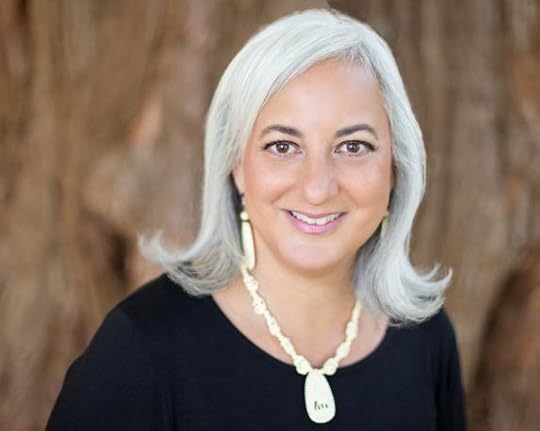 Tara Lynn Masih
Tara Lynn MasihLearn more about Tara at her website.
Follow her on Goodreads.
Buy the book from the publisher (Press 53), Amazon, or Bookshop.org.
September 6, 2022
I’ve Got Questions for Judith Turner-Yamamoto
Editor’s Note: This exchange is part of a series of brief interviews with emerging writers of recent or forthcoming books. If you enjoyed it, please visit other interviews in the I’ve Got Questions feature.
 Loving the Dead and Gone by Judith Turner-YamamotoWhat’s the title of your book? Fiction? Nonfiction? Poetry? Who is the publisher and what’s the publication date?
Loving the Dead and Gone by Judith Turner-YamamotoWhat’s the title of your book? Fiction? Nonfiction? Poetry? Who is the publisher and what’s the publication date?Loving the Dead and Gone, Fiction, Regal House Publishing, 6 September 2022
In a couple of sentences, what’s the book about?A freak car crash in rural 1960s North Carolina puts in motion moments of grace that bring redemption to two generations of women and the lives they touch.
What’s the book’s genre (for fiction and nonfiction) or primary style (for poetry)?Literary fiction/historical fiction
What’s the nicest thing anyone has said about the book so far?I recently connected with a high school classmate who regrettably, I didn’t know at that time as we would have been fast friends. The highest praise I’ve heard is him saying that I have lived my whole life to write this story.
What book or books is yours comparable to or a cross between? [Is your book like Moby Dick or maybe it’s more like Frankenstein meets Peter Pan?]Jill McCorkle’s Hieroglyphics. Both explore the generational effects of love and loss and the fragile connections within a family.
Why this book? Why now?The story arc of love, loss, grief, and grace is finding emotional resonance with our recent shared pandemic experience of life upended by unexpected events.
Other than writing this book, what’s the best job you’ve ever had?I met a famous psychic when I was a young mother and he told me he saw a golden hand with a pen in it, surrounded by press, passports, and suitcases. That is exactly how my parallel career as an art critic and features writer unfolded. I was free to follow my curiosity while working with such publications as The Boston Globe Magazine, Elle, Omni, Interiors, Art & Antiques, The Los Angeles Times, and Travel & Leisure. That work, and over 1000 articles, took me all over the world—this was a time when publications, tourism boards, and museums paid for writer travel– and into conversation with such luminaries as Frank Gehry, Charles Ross, Hella Jongerius, Marcel Wanders, Beaumont Newhall, Annie Leibovitz, Alison Krauss, and Lucinda Williams.
What do you want readers to take away from the book?In life’s greatest traumas lurk the seeds of change and redemption. It’s all endings and beginnings.
What food and/or music do you associate with the book?I’ll quote a recent poem published in a Mindful Poetry Moments/On Being Anthology: “Green beans and corn fresh from the field, but cooked to a tired sadness. And the watermelon, plunged in the well. Cold, quartered, doused with salt.”
What book(s) are you reading currently? I’m anxiously awaitingPema Chödrön’s How We Live Is How We Die. And how did I first learn about it? Her review appears just below mine in the September/October issue of Foreword Reviews. How absolutely incredible and synchronous is that?
 Judith Turner-Yamamoto
Judith Turner-YamamotoLearn more about Judith on her website.
Follow her on Instagram and Twitter.
Buy the book from the publisher (Regal House Publishing), Barnes & Noble, Amazon, Indiebound (your local independent bookseller), or Bookshop.org.
September 1, 2022
I’ve Got Questions for Felicia Mitchell
Editor’s Note: This exchange is part of a series of brief interviews with emerging writers of recent or forthcoming books. If you enjoyed it, please visit other interviews in the I’ve Got Questions feature.
 A Mother Speaks, A Daughter Listens by Felicia MitchellWhat’s the title of your book? Fiction? Nonfiction? Poetry? Who is the publisher and what’s the publication date?
A Mother Speaks, A Daughter Listens by Felicia MitchellWhat’s the title of your book? Fiction? Nonfiction? Poetry? Who is the publisher and what’s the publication date?A Mother Speaks, A Daughter Listens: Journeying Together Through Dementia, from Wising Up Press, is a book of poems with a release date of September 1, 2022.
In a couple of sentences, what’s the book about?The book recognizes the spirit and resilience of a woman with dementia along with reflections on a relationship between daughter and mother from early days through nursing home and hospice to after the mother’s death.
What’s the book’s genre (for fiction and nonfiction) or primary style (for poetry)?The poems are mostly what one might call lyric verse with narrative elements, some poems more lyrical and others more narrative, and the book also includes my mother’s voice through found poems and through poems I composed in her voice. The poems can stand alone, most of them, but there is a narrative arc inviting the reader to engage with them holistically.
· What’s the nicest thing anyone has said about the book so far?
I will share here some of a review Terri Kirby Erickson has written because these words from an insightful poet and reader (and dear friend) validate the effort it took to create this book: “These women’s stories are real and true, their interactions via Mitchell’s exquisite poems as raw and honest as anything I have ever read, but tender, too, reminding us, again and again, that love outlasts memory and, indeed, transcends even death.”
What book or books is yours comparable to or a cross between? [Is your book like Moby Dick or maybe it’s more like Frankenstein meets Peter Pan?]It might sound glib for me to say that there is no book like my book. I will admit instead that I am intrigued by intertextuality and cross-genre writing, so think of books like that, or perhaps that treasure trove of letters, diaries, and faded handwritten poems you find in a box in an attic to learn of a past life. The book is also a bit like a documentary film.
Why this book? Why now?Although I wrote poems about my mother my whole life (and an early one serves as epigraph), I began writing this book in earnest after my mother came to live in a nursing home near me. These were complicated years during which I fell in love with her all over again, going back to the innocent love a child can hold at the same time we were immersed in a very adult and complex relationship. Through these years and beyond, the collection went through many conceptualizations and revisions until it found its center. With the pandemic, and so much solitude, and with my retirement from teaching in 2020, I was able to focus on shaping it to seek a publisher that shared my social vision for the book. I might also say that with time I had more distance from the subject and could more easily, as Wordsworth advised, recollect great emotion in tranquility. My mother died in 2011.
Other than writing this book, what’s the best job you’ve ever had?I enjoyed 33 years teaching at a liberal arts college, Emory & Henry College, which gave me creative autonomy in my scholarship and in the classroom. I loved teaching a range of courses from writing to creative writing to linguistics (and more).
What do you want readers to take away from the book?I hope that readers see better through the distorted lenses sometimes assigned to visions of dementia, to see what remains when a person changes. I want readers to enter the conversation my mother and I had and carry it on in their own lives as they talk about dementia. I want readers to understand that when somebody forgets, we remember instead, if we can.
What food and/or music do you associate with the book?My mother loved Edith Piaf’s songs, which I play to remember listening with her, one of which I mention in the book. This question also invites me to remember her dancing in the living room to the Fantastic Johnny C’s “Boogaloo Down Broadway,” but that is a story for another time, though the book does disclose how she loved to dance. As for food, I will always associate chicken perlo made from scratch (no sausage in ours), a childhood favorite, with my mother. It involves a mélange of simple ingredients in one dish, sort of like this book.
What book(s) are you reading currently?I just started the Horse by Geraldine Brooks. By the time this interview appears, I will have finished Marilyn Kallet’s new book of poems, Even When We Sleep (Black Widow Press).
 Felicia Mitchell
Felicia MitchellLearn more about Felicia on her website
Buy a copy of the book from the publisher, your favorite indie bookstore, Bookshop.org, and other national booksellers.
August 31, 2022
2022 Reading — August
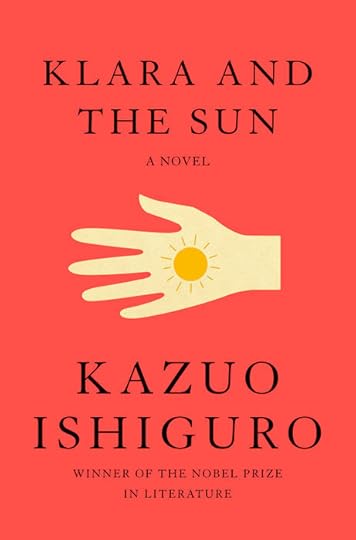 Klara and the Sun by Kazuo Ishiguro
Klara and the Sun by Kazuo IshiguroKlara and the Sun by Kazuo Ishiguro is my book club’s selection for August. I didn’t love it, I have to admit. The novel is told from the point of view of Klara, who is a robot/android known as an AF, or Artificial Friend. When she’s still on display in the store, she grows fond of the Sun as it shines into the store windows and even believes it has special healing powers. Eventually, she is purchased by a woman to be the companion of Josie, a frail young girl. Josie is a teenager and prone to moodiness, but she’s also got some kind of debilitating illness that everyone seems to think will kill her (her sister also died young). But one thing that brings her joy is her neighbor Rick, a regular kid who enjoys working with drone technology, and they plan to spend their lives together. Given their different status, this seems unlikely, and it is one of the sources of tension in the book. While it was an interesting read, it only got exciting for me in the last third when a major plot element is revealed, which is likely to be a problem for some readers.
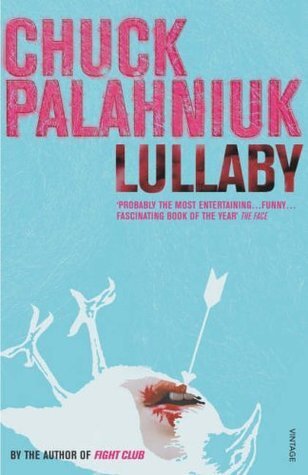 Lullaby by Chuck Palahniuk
Lullaby by Chuck PalahniukLullaby by Chuck Palahniuk was not my cup of tea. It’s about a reporter who is writing a newspaper series on Sudden Infant Death Syndrome (SIDS), except it turns out he’s really trying to understand what happened to his own wife and child for whose deaths he was blamed many years before. Meanwhile, he connects with a whacko real estate broker who seems to specialize in haunted houses—selling them over and over as buyers flee after moving in—but her real job is using a “culling” spell to knock off dictators and other bad guys on behalf of governments, including the US. The reporter learns that the spell is included in a book of poetry that parents read to their children, possibly explaining their deaths from SIDS. And so on. Too weird, too disjointed, too gruesome.
 Neruda on the Park by Cleyvis Natera
Neruda on the Park by Cleyvis NateraNeruda on the Park by Cleyvis Natera is a novel about an immigrant family from the Dominican Republic who live in a neighborhood that is being gentrified, blamed on “white capitalism.” The story is told from the point of view of Eusebia, a middle-aged woman who is determined to battle the development in their neighborhood, and her daughter, Luz, a lawyer who has just been fired from her law firm after five years and now is looking for purpose. Eusebia takes a surprisingly violent approach to her activism, fabricating crimes to make the area seem less attractive to the kind of buyers the developers would want to attract. This creates some intriguing action and suspense. Luz, though, falls in love with a white property developer—over Eusebia’s objections—and is caught between two worlds.
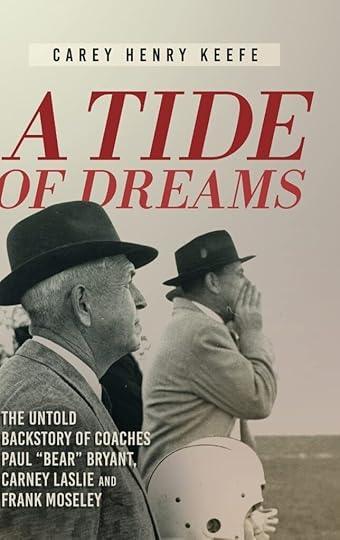 A Tide of Dreams by Carey Henry Keefe
A Tide of Dreams by Carey Henry KeefeA Tide of Dreams by Carey Henry Keefe (forthcoming, Koehler Books, October 1) is a book about Paul “Bear” Bryant and two of his coaching colleagues, including the author’s grandfather, Carney Laslie. I was asked to provide a blurb for the book, which I was happy to do: “More than a book about football, A Tide of Dreams is a story of pride, perseverance, ambition, and, above all, loyalty. With meticulous research and a personal connection to one of the protagonists, Carey Henry Keefe has created a remarkable behind-the-scenes look at three men who led very public lives in the pressure-filled world of college sports. They were not supermen, and their careers were sometimes rocky, but Keefe shows us, flaws and all, their inspiring drive to succeed and their commitment to one another. This is a story not to be missed and is beautifully told by a fine writer.”
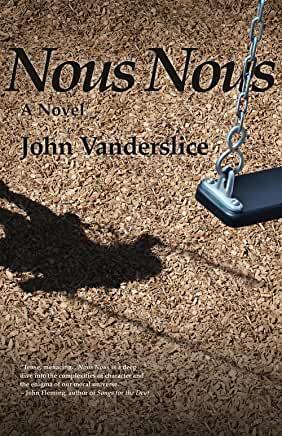 Nous Nous by John Vanderslice
Nous Nous by John VandersliceNous Nous by John Vanderslice is an intense psychological thriller in which the mystery is why the antagonist does what he does. In addition, the protagonist struggles with the conflict in her role as an Episcopal priest and as a mother. Told from several points of view, including the mother, her daughter, and the daughter’s kidnapper, it is a dark tale that is difficult to read and yet hard to put down. It begins when a man, who it will be revealed is a lapsed Catholic, visits an Episcopal church seeking guidance. He wants to kill someone and he wants a reaction to that statement but doesn’t seem to want to be talked out of doing it. Elizabeth, the priest, doesn’t take him too seriously and is distracted by her duties as a mother to talk to him for long, with a devastating result.
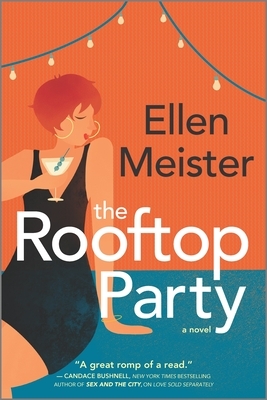 The Rooftop Party by Ellen Meister
The Rooftop Party by Ellen MeisterThe Rooftop Party by Ellen Meister. I wouldn’t ordinarily read a book described as a “rom-com/murder mystery” but I read an earlier novel by the author, so I decided to give this one a try. (Was it because I recently attended a rooftop party? Maybe?) Anyway, I was right that I’m not the intended audience for a book like this, but that doesn’t mean I can’t appreciate the craft that went into writing it. First, I love a story where the protagonist has a credible job. In this case, Dana is a host of a show on “The Shopping Channel,” and although I don’t watch such things, it all seemed authentic to me. Second, there were enough twists and turns and red herrings to make the mystery interesting. And third, Dana was relatably bad at managing her relationship with her lover. Finally, Dana’s curmudgeonly father, although a little over the top, was hilarious. All in all, an entertaining diversion.
August 29, 2022
I’ve Got Questions for Jennifer S. Davis
Editor’s Note: This exchange is part of a series of brief interviews with emerging writers of recent or forthcoming books. If you enjoyed it, please visit other interviews in the I’ve Got Questions feature.
What’s the title of your book? Fiction? Nonfiction? Poetry? Who is the publisher and what’s the publication date? We Were Angry by Jennifer S. Davis
We Were Angry by Jennifer S. DavisWe Were Angry: A Novella & Stories, Press 53, August 29, 2022
In a couple of sentences, what’s the book about?We Were Angry follows a group of childhood friends over several decades as they reckon with their desires and the dark history of their small, Southern town.
What’s the book’s genre (for fiction and nonfiction) or primary style (for poetry)?Fiction
What’s the nicest thing anyone has said about the book so far?What Michael Knight said meant the world to me since I learned to write, in part, by studying his earlier work: “Jennifer Davis’s new collection is breathtaking in its intensity, in the emotional heat in these pages, the sheer weight of love and longing and loss. It’s set in Alabama, but these characters might live anywhere hearts break and life doesn’t turn out the way we dream it, the place as deeply felt and alive as the people and rendered by a world-class short story writer at the top of her game.”
What book or books is yours comparable to or a cross between? [Is your book like Moby Dick or maybe it’s more like Frankenstein meets Peter Pan?]I am one of those self-loathing writers who can’t really see my work clearly and fears ridicule if I dare compare my book to another writer’s book, however loosely. There’s no way I can be so precise as to compare it to specific books, but I will try to compare it to a few writers: We Were Angry is like Flannery O’Connor meets Bobby Ann Mason with a touch of the wondrous Debra Monroe and the novelesque quality of Alice Munro. (Maybe. I will swear everything I just stated here is nonsense as soon as I send off this interview.)
Why this book? Why now?I’m from a town similar to the setting of We Were Angry, and I’m a parent of four young kids and at an age that I am wrangling with some of the same questions that run throughout the book. Why is it so hard to connect with other human beings? Why do we cause so much harm to those we want to comfort and love the most? How can we make a life amid so much loss, and who do we think we are to even try? How do we reckon with our dark, violent history so that we do not pass on our terrible burdens to our children?
Other than writing this book, what’s the best job you’ve ever had?Teaching at LSU has been a gift. The students are a joy and definitely keep me on my toes in the best of ways.
What do you want readers to take away from the book?This collection is all about missed connections. I hope the reader will feel a little less alone.
What food and/or music do you associate with the book?I associate Willie Nelson’s Red Headed Stranger with pretty much all the story collections that I write, but this one especially since the novella takes place in Montana. I learned how to tell stories by listening to my father play that album.
What book(s) are you reading currently?I leave books scattered all over the place and pick them up whenever I can. Right now I am reading Night of the Living Rez by Morgan Talty, Craft in the Real World by Matthew Salesses, The Prince of Mournful Thoughts by Caroline Kim, and Under Capitalism if Your Head Aches They Just Yank Off Your Head by Ariel Francisco, my wonderful colleague at LSU. I’m also rereading Giovanni’s Room and reading Superfudge to my kid.
 Jennifer S. Davis
Jennifer S. DavisLearn more about Jennifer at her website.
Follow her on Twitter.
Buy the book from the publisher (Press 53) or from Bookshop.org.
August 10, 2022
I’ve Got Questions for Stacy R. Nigliazzo
Editor’s Note: This exchange is part of a series of brief interviews with emerging writers of recent or forthcoming books. If you enjoyed it, please visit other interviews in the I’ve Got Questions feature.
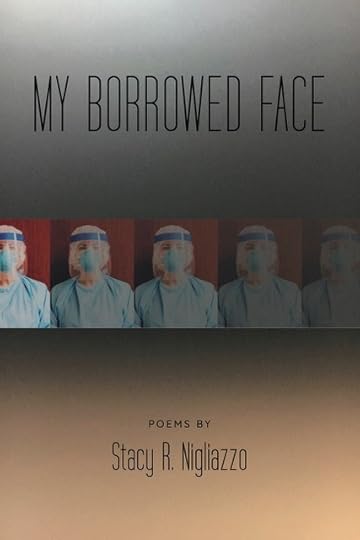 My Borrowed Face by Stacy R. NigliazzoWhat’s the title of your book? Fiction? Nonfiction? Poetry? Who is the publisher and what’s the publication date?
My Borrowed Face by Stacy R. NigliazzoWhat’s the title of your book? Fiction? Nonfiction? Poetry? Who is the publisher and what’s the publication date?My Borrowed Face; Poetry; Press 53; Pub date 4.26.2022
In a couple of sentences, what’s the book about?My Borrowed Face chronicles my journey as a frontline nurse over the course of the coronavirus pandemic (2020-2022).
What’s the book’s genre (for fiction and nonfiction) or primary style (for poetry)?The poems are deliberately concise and fragmented with myriad white space, mirroring the frantic, focused care provided by physicians, nurses, and ancillary staff over our fitful last two years.
What’s the nicest thing anyone has said about the book so far?In a review of My Borrowed Face, Jennifer Martelli writes, “the poems throb across the page, pulling us apart with each word or phrase, transforming until ‘our hearts break’.” I am humbled and deeply grateful for her perspective.
What book or books is yours comparable to or a cross between? [Is your book like Moby Dick or maybe it’s more like Frankenstein meets Peter Pan?]In terms of pandemic narratives, I would certainly hope it would be comparable to such works as Daughter, by Cortney Davis, and A Different Distance: A Renga, by Marilyn Hacker & Karthika Nair. Both of these books tell deeply personal, compelling stories with bravery and compassion, but above all, they are wholly authentic and believable.
Why this book? Why now?
There are few events in our recent past that are bigger, and perhaps more misunderstood, than the pandemic. As a frontline healthcare worker I feel a responsibility to tell this story; to confess and to clarify.
Other than writing this book, what’s the best job you’ve ever had?I consider patient care and creative writing both to be my life’s work in equal measure. I am thankful for each job and don’t believe I could effectively do one without the other.
What do you want readers to take away from the book?I want readers to understand what it was like in our hospitals and in our communities during the pandemic; to learn and to move forward with honesty, wisdom, and purpose.
What food and/or music do you associate with the book?Music saved me during the pandemic, especially the classics. I played them continuously on my iPhone as I worked. I still do. Most of the lyrics are in Latin, which I generally do not look up, I simply find comfort in the knowledge that they are also prayers (i.e., Faure’s Requiem, Op. 48: Pie Jesu). Any food I associate with this book would be whatever I could eat hastily between cases, away from the wards – and at least ten gallons of Coke Zero.
What book(s) are you reading currently?The Collected Poems of William Carlos Williams, Joseph Conrad’s Heart of Darkness, and E.M. Forster’s A Passage to India.
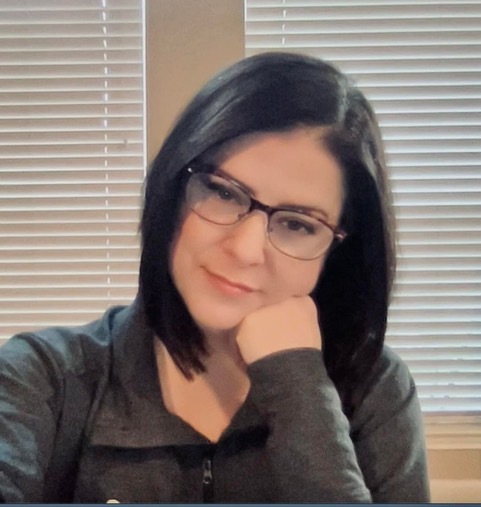 Stacy R. Nigliazzo
Stacy R. NigliazzoLearn more about Stacy on her website.
Buy the book from the publisher (Press 53) or on Bookshop.org.
August 8, 2022
I’ve Got Questions for Mary Jane White
Editor’s Note: This exchange is part of a series of brief interviews with emerging writers of recent or forthcoming books. If you enjoyed it, please visit other interviews in the I’ve Got Questions feature.
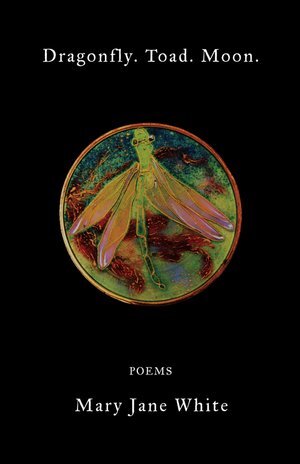 Dragonfly. Toad. Moon. by Mary Jane WhiteWhat’s the title of your book? Fiction? Nonfiction? Poetry? Who is the publisher and what’s the publication date?
Dragonfly. Toad. Moon. by Mary Jane WhiteWhat’s the title of your book? Fiction? Nonfiction? Poetry? Who is the publisher and what’s the publication date?Dragonfly. Toad. Moon. Poetry. Press 53. April 9, 2022.
In a couple of sentences, what’s the book about?These are poems about my son’s recovery from early childhood autism and about my own childhood and other poets’ work that has been important to me.
What’s the book’s genre (for fiction and nonfiction) or primary style (for poetry)?There are both formal poems and free verse poems.
What’s the nicest thing anyone has said about the book so far?“This book will help my grandson whose parents just received a new diagnosis on the autism spectrum.”
What book or books is yours comparable to or a cross between? [Is your book like Moby Dick or maybe it’s more like Frankenstein meets Peter Pan?]W.D. Snodgrass’s Heart’s Needle.
Why this book? Why now?My son is now 31, the chief technical officer of an EU start-up in cybersecurity; this book brings hope to families who may be told as I was that their toddler might never speak, work productively or know that anyone loves him or her.
Other than writing this book, what’s the best job you’ve ever had?Trial lawyer trying first-degree murder case to acquittal and business fraud case to a multi-million dollar verdict.
What do you want readers to take away from the book?What it feels like to raise a young child with autism.
What food and/or music do you associate with the book?Chocolate milk and black olives—the only things my son would eat for years after weaning.
What book(s) are you reading currently?My Hollywood by Boris Dralyuk, a book of poems.
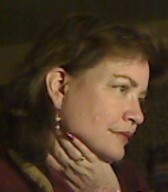 Mary Jane White
Mary Jane WhiteLearn more about Mary Jane on her website.
Follow her on Facebook.
Buy the book from the publisher (Press 53), Amazon, or Bookshop.org.
July 31, 2022
2022 Reading — July
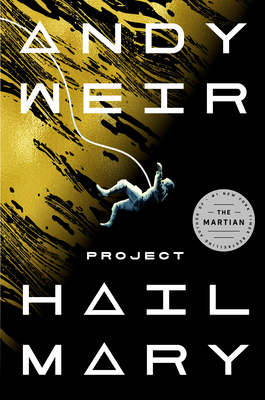
Project Hail Mary by Andy Weir is a science fiction thriller about an energy-eating bacterial threat to life on Earth. A man awakens from a coma, realizes he’s on a spaceship, and then realizes he’s in a different solar system. He explores his ship and eventually begins to remember what happened and how he got involved in this project that is intended, apparently, as a last-ditch effort to save humanity from the effects of the diminishing energy of our sun. It takes a long time for him to understand how his trip is supposed to do that, but he’s learning as much as he can and he even encounters another ship, occupied by a being from another planet that has the same problem, and they share information. Although I hardly ever read science fiction, I was engaged in this story and in the narrator’s voice. There’s a bit too much science in this science fiction, although admittedly that lends an air of credibility to an otherwise outlandish tale.

How the Word is Passed: A Reckoning with the History of Slavery Across America by Clint Smith is a uniquely told story of slavery in America and its aftermath. Smith visits several sites around the country (and one in Senegal) that tell different pieces of the greater story. We start with Thomas Jefferson’s Monticello where Smith goes on the “slavery tour” and finds that the guide is honest and forthcoming about Jefferson’s slave ownership and his much-studied relationship with Sally Hemmings. This is a relatively recent development, as they used to hide information about Hemmings and spent little time on the fact that Jefferson was a slave owner. Smith visits plantations and prisons in the south and then takes a tour of old New York which is further enlightening. Smith is a poet and some of the language of the book is more flowery than one would expect for a history book, but that doesn’t detract in any way from the book’s readability.
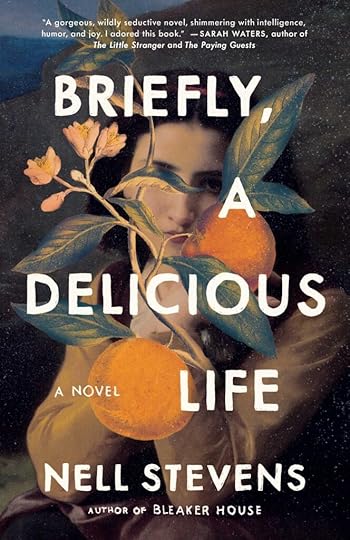
Briefly, A Delicious Life by Nell Stevens is a book I reviewed for the New York Journal of Books. In 1838, the writer George Sand and her lover, the composer Frederic Chopin, arrive on the island of Mallorca with Sand’s two children in an attempt to escape the harsh Parisian winter for Chopin’s health. Things don’t go quite as planned. As if that weren’t a unique enough premise for a story—I did not know about the relationship between Sand and Chopin—it is told from the point of view of a ghost, a Mallorcan woman who died some three hundred years earlier. In fact, to the extent that there’s a plot here, the ghost is more interesting than Sand and Chopin, whose lives are more familiar, because she’s also telling the story of her own death while recounting Sand’s days in Mallorca. I gather that the author gleaned many of the details about Sand’s and Chopin’s stay on the island from Sand’s own book, A Winter in Mallorca.

The Grievers’ Group by Richard Wiley is a poignant story about grief. Cornelius, a writer in his seventies, has recently lost his wife, Yuki, to cancer. To cope with his grief—he also thinks he’s visited by her ghost, but the book, thankfully, doesn’t dwell much on this—he joins a therapy group of people who are also grieving lost loved ones. Even their therapist, who is a quirky Icelandic woman, is grieving for her mentor, and everyone’s stories are revealed over time. Meanwhile, Corny’s granddaughter also is having problems, having at age fourteen begun having sex with a handsome boy in her class at school. All of these tales have interesting twists and turns that lead to a satisfying conclusion.
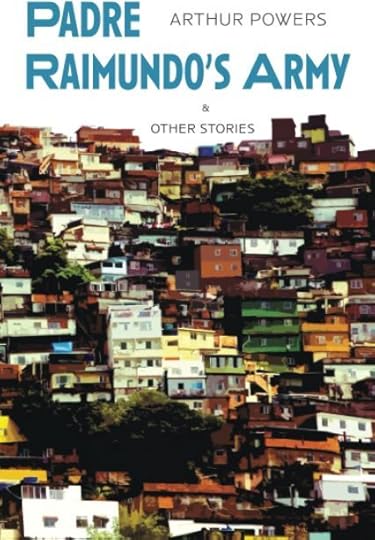
Padre Raimundo’s Army and Other Stories, by Arthur Powers is a collection of short stories mostly set in Brazil by a former Peace Corps Volunteer who had been stationed there and later spent a long time in the country. The stories are eclectic, dealing a variety of subjects, and many are rather dark. One of the stories also appeared in Everywhere Stories: Short Fiction From a Small Planet, an anthology of international stories I edited.
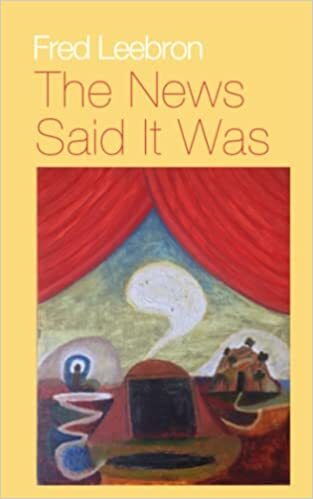
The News Said It Was by Fred Leebron is a terrific short collection of fiction. Every piece is darkly imagined and every sentence is a gem. Leebron is brilliant. I won’t wait long to read this book again.
July 18, 2022
I’ve Got Questions for Gabriel Arquilevich
Editor’s Note: This exchange is part of a series of brief interviews with emerging writers of recent or forthcoming books. If you enjoyed it, please visit other interviews in the I’ve Got Questions feature.
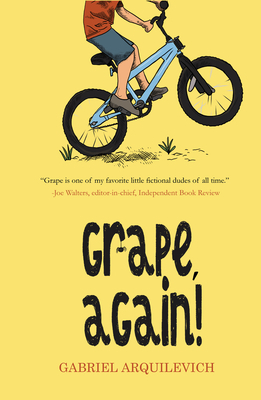 Grape, Again! by Gabriel ArquilevichWhat’s the title of your book? Fiction? Nonfiction? Poetry? Who is the publisher and what’s the publication date?
Grape, Again! by Gabriel ArquilevichWhat’s the title of your book? Fiction? Nonfiction? Poetry? Who is the publisher and what’s the publication date?Grape, Again! Fiction. Release on July 19, 2022, by Fitzroy books, an imprint of Regal House Publishing.
In a couple of sentences, what’s the book about?The continued misadventures of Grape, a sweetly troubled kid, as he moves into junior high, prepares for his bar mitzvah, and make a new wheelie-popping friend.
What’s the book’s genre (for fiction and nonfiction) or primary style (for poetry)?Upper middle-grade fiction.
What’s the nicest thing anyone has said about the book so far?“It’s quick and furious and impossible not to enjoy from beginning to end.” – Tonja Drecker, Bookworm for Kids.
What book or books is yours comparable to or a cross between? [Is your book like Moby Dick or maybe it’s more like Frankenstein meets Peter Pan?]The Secret Diary of Adrian Mole meets “A&P”
Other than writing this book, what’s the best job you’ve ever had?Teaching!
What do you want readers to take away from the book?A lot of laughs, some tears, and greater understanding of the serious business of the preteen years. For any Boomers out there, a visit into the 1970s!
What food and/or music do you associate with the book?Early Black Sabbath, Elton John. For cultural spots, I would add Evel Knievel and Jack LaLanne.
What book(s) are you reading currently?Our Souls at Night, by Kent Haruf. The Man Within My Head, by Pico Ayer.
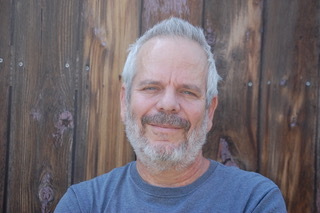 Gabriel Arquilevich
Gabriel ArquilevichLearn more about Gabriel on his website.
Buy the book from the publisher (Fitzroy Books/Regal House Publishing), Amazon, or Bookshop.org.
July 5, 2022
I’ve Got Questions for Gary Eldon Peter
Editor’s Note: This exchange is part of a series of brief interviews with emerging writers of recent or forthcoming books. If you enjoyed it, please visit other interviews in the I’ve Got Questions feature.
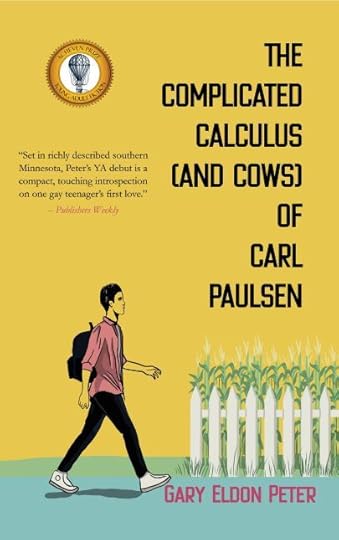 The Complicated Calculus (and cows) of Carl Paulsen by Gary Eldon PeterWhat’s the title of your book? Fiction? Nonfiction? Poetry? Who is the publisher and what’s the publication date?
The Complicated Calculus (and cows) of Carl Paulsen by Gary Eldon PeterWhat’s the title of your book? Fiction? Nonfiction? Poetry? Who is the publisher and what’s the publication date?The Complicated Calculus (and Cows) of Carl Paulsen, published by Fitzroy Books (an imprint of Regal House Publishing); pub date is July 5, 2022.
In a couple of sentences, what’s the book about?It’s about a gay teenager living on a small and struggling Minnesota dairy farm who thinks he’s met the boy of his dreams, but it turns out to be a lot more complicated than he realizes. He is also dealing with the potential loss of the farm, which was handed down from his late mother’s family, and the conflicts he has with his father about what to do about it.
What’s the book’s genre (for fiction and nonfiction) or primary style (for poetry)?It’s a young adult novel, but I hope that adults will pick it up as well and find things in the story that they might identify with. I’m mindful of the expression that YA books are about young adults but aren’t necessarily exclusively “for” young adults.
What’s the nicest thing anyone has said about the book so far?I was really pleased when Publishers Weekly, in reviewing the book, characterized the setting as “richly described.” Place has never felt like a strong suit in my work so that was particularly gratifying.
What book or books is yours comparable to or a cross between? [Is your book like Moby Dick or maybe it’s more like Frankenstein meets Peter Pan?]I hesitate to make comparisons to specific books, but there is a long tradition of novels set in rural communities, which provide such rich terrain for great characters and storytelling. My novel is very much inspired by that tradition, and I’d like to think I’m making a contribution to that, if even in a small way.
Why this book? Why now?I wanted to create an adolescent character who was very self-aware of his identity and comfortable with it rather than someone dealing with “am I gay or not” questions, which can certainly give rise to worthy stories but I was interested in something different. Instead, the question for Carl, the main character, is “how do I help the world understand who I am and how do I understand my place in it?”
Other than writing this book, what’s the best job you’ve ever had?Without a doubt, it’s teaching. It’s demanding work but helping college students to learn and grow and consider new ideas and ways of thinking…there’s nothing better.
What do you want readers to take away from the book?It’s a simple message, but LGBTQ+ people are everywhere, in all communities. Also, acceptance and understanding for LGBTQ+ individuals (particularly kids) not living in urban areas can still be a challenge despite the significant progress we have made.
What food and/or music do you associate with the book?The book is set in rural Minnesota, so there is a lot of “hot dish” (casseroles) being served! I’m a big fan of that type of food because it’s what I grew up on, so it was fun to be able to include that in the story.
What book(s) are you reading currently?I’m not sure that this exactly qualifies as “reading,” but every day (weather permitting) I take a 30-40 minute walk around my neighborhood and recently I’ve started listening to the New Yorker Fiction Podcast while I’m walking. The podcast features a contemporary writer published in the magazine reading a short story also published in the New Yorker that they admire, and then discussing the story with the magazine’s fiction editor. Some of the names (both the writer who chose the story and the writer whose work is read) are familiar, but a lot are not, so I’ve discovered some excellent writers both past and present that I want to explore further. Exercise and a “mini craft class” in the art of fiction writing – it’s a great combination!
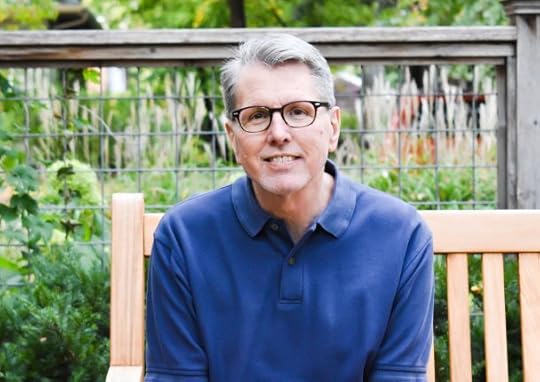 Gary Eldon Peter
Gary Eldon PeterLearn more about Gary on his website.
Buy the book from the publisher (Fitzroy Books) or Bookshop.org.



